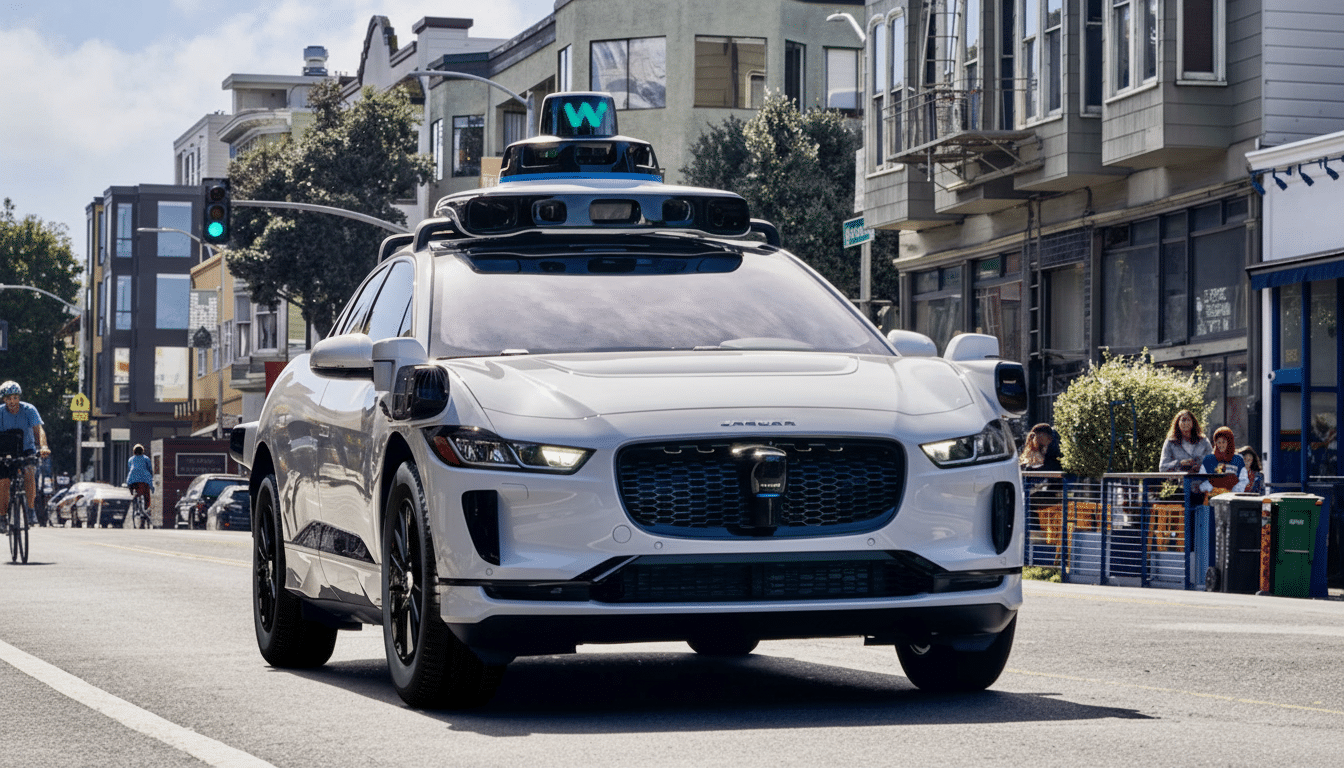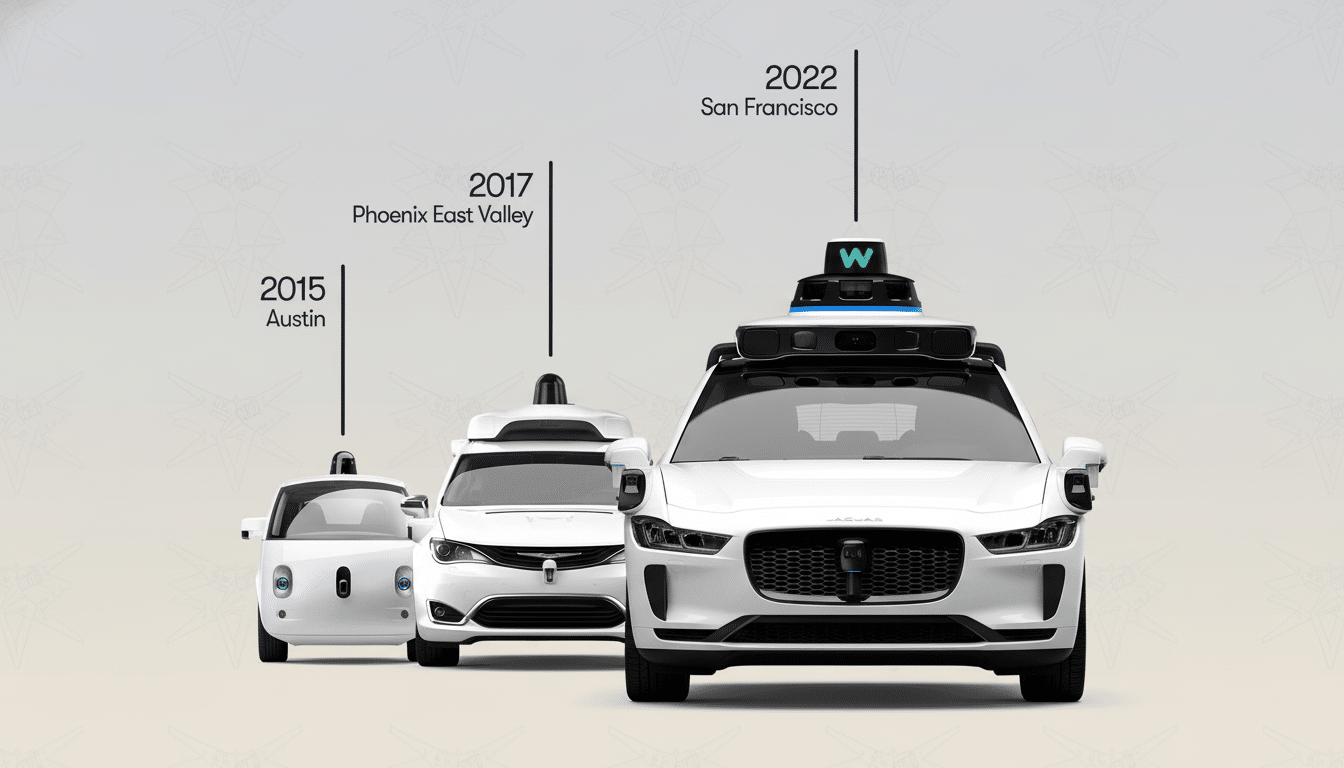Waymo received a crucial regulatory green light to expand its driverless footprint throughout California, with the go-ahead to operate without humans behind the wheel in parts of the Bay Area and along a long stretch of Southern California. The approval, which appears in recently updated maps from the California Department of Motor Vehicles, marks the formal green light for the Alphabet-owned company to link multiple neighborhoods and cities into a single robotaxi network as it seeks to scale its service in time for paid rides across more markets.
What the new California autonomous approval covers
Waymo’s permitted area now extends farther in Northern California, beyond San Francisco and Silicon Valley, to most of the East Bay and North Bay areas — up into Wine Country and over to Sacramento.
- What the new California autonomous approval covers
- Passenger service still needs CPUC clearance
- Why the expansion matters for California’s robotaxis
- Safety measures and public oversight as service scales
- Economic and transit implications of wider operations
- What comes next for Waymo’s California expansion

South is the approved area, starting with Santa Clarita and reaching down through Los Angeles and Orange County to San Diego, dramatically expanding the testing and operations playing field.
With the DMV approval, fully driverless service now extends well beyond these mapped areas, adding on to Waymo’s existing service in San Francisco and Los Angeles. Waymo has also indicated that it plans to open its service to riders in San Diego in mid-2026, highlighting a gradual rollout based on technical readiness, rider demand, and coordination with local authorities.
Passenger service still needs CPUC clearance
California’s regulatory system bifurcates government oversight: the DMV regulates the testing and deployment of self-driving vehicles, while the California Public Utilities Commission is charged with determining whether those vehicles can transport paying passengers. That will require Waymo to secure additional approvals from the CPUC before charging fees in today’s newly opened territories, which is usually a process that includes safety plans, operational reporting, and data-sharing commitments.
In practice, Waymo typically begins with a limited service open only to invited riders and steadily increases hours, coverage, and availability of rides as it proves its safety performance and reaches regulatory milestones. We shouldn’t be surprised if we see that same rhythmic pattern when the company adds more communities to its driverless network.
Why the expansion matters for California’s robotaxis
That overlap makes robotaxis more useful. Connecting San Francisco to large swaths of the East and North Bay creates new cross-bay options — and possible airport links. In Southern California, a corridor from Santa Clarita to San Diego opens up possibilities for high-frequency, high-demand rides across thick urban and suburban lanes that include freeway stretches Waymo has started taking advantage of in Los Angeles and San Francisco.
The shift also changes the competitive calculus. Traditional ride-hailing still predominates, but autonomous fleets are starting to infiltrate the mundane world of point-to-point mobility. There are other players, like Zoox and Motional, who are also developing rider services in parallel, but Waymo’s steadily growing operations with riders only give it an edge at scale in terms of training data and the service reliability of its operation due to brand familiarity.

Safety measures and public oversight as service scales
Safety is still the hinge for every expansion. Waymo has reported that its analyses of millions of passenger-only miles show collision rates lower than human counterparts in analogous scenarios, results which it attributes to multiple redundancies across sensation and perception, and decision-making. California regulators demand extensive incident reporting, and local public safety agencies have called for new emergency scene guidelines in the wake of previous robotaxi disruptions in San Francisco.
Waymo says that it works with emergency responders and provides 24/7 remote control for its vehicles, as well as continuously updated software to deal with edge cases like temporary road closures or special events. As the operating map expands, those collaborative playbooks will come up against wider real-life tests against backgrounds of varied road regulations, transit hubs, and adiabatic microclimates.
Economic and transit implications of wider operations
The expansion could result in tangible improvements to late-night transit for some, first-and-last-mile connections, and access in transit-deprived areas. Waymo’s airport connections — like the service linking to Phoenix’s Sky Train — can serve as a template for California connections to BART, Caltrain, and Metrolink stations. For city governments grappling with traffic congestion and safety, A.V. options can serve as a complement to transit while also potentially curbing impaired driving and increasing the availability of transportation for non-drivers.
Cost remains a key variable. Waymo’s prices in existing markets tend to reflect ride-hailing rates, but greater coverage and fleet utilization could support improved unit economics over time. Regulators and urban planners will be monitoring the way pricing, equal access, and curb management transform as self-driving rides become more widespread.
What comes next for Waymo’s California expansion
Today, Waymo operates in San Francisco, Silicon Valley, and Los Angeles in California, as well as Phoenix, and outside California in cities including Austin and Atlanta. It has also recently expedited launches in more U.S. markets, taken safety drivers out of cars as part of commercial service in Miami, and started routing on freeways in select cities. The new California map offers the company a runway to put together a broader network (subject to CPUC approvals) beginning with an initial launch in San Diego.
If the company keeps up its solid safety performance — and earns those remaining permits to carry paying passengers — the Bay Area and Southern California would soon be home to the most extensive contiguous robotaxi markets in America, a meaningful step on the path toward mainstream autonomous mobility.

